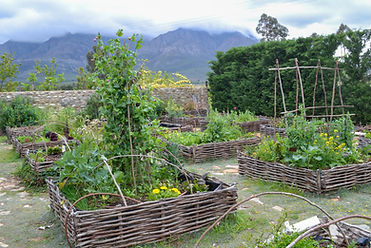What is Permaculture?
If you have been in the world of organic farming and gardening for long enough, you eventually bump into a stange word : PERMACULTURE It is a fairly simple idea and it manifestations are everywhere you look.
Bill Mollison, the Tasmanian son of a fisherman first coined the term in 1978 and defined it as
“The conscious design and maintenance of agriculturally productive systems which have the diversity, stability and resilience of natural ecosystems. It is the harmonious intergration of the landscape with people providing their food, energy, shelter and other material and non-material needs in a sustainable way.”
Permaculture is thus a holistic, living-in-harmony-with-nature worldview, as well as a technical approach for how to do so.
Mollison eventually became a professor of biogeography and environmental phychology at the University of Tasania, where he met David Homgren, a graduate student at the time, who helped hom develop the principles and practices that are now taught around the world.
The word is intended as a contraction of Permanent and agriculture. The root word “permanent” is intended as a referance to sustainablitity – an unsustainable society would, by definition, eventually cease to exit; it would be impermanent.

Here are five of its more well-known principles to help you understand what permaculture is:
Eco-Earthworks
Water conservation is a major focus on permacultre farms and gardens, where the earth is often carefully sculpted to direct every last drop of rain toward some useful purpose. This may take the form of terraces on steep land; swales on moderately sloped land ( which are broad, shallow ditches intended to capture runoff and cause it to soak into the ground and around plantings); or a system of canals and planting berms on low swampy ground. The latter is modeled on the chinampas of the ancient Aztecs, and approach to growing food, fish and other corps in an intergrated system, often heralded by .parmaculturists as the most productive and sustainable form of agriculture ever devised.
Closed Loop Systems
Any system that provides for its own energy needs is inherently sustainable. This concept can be extended beyond things like biofuels and solar power to what permacuturists call “imputs” like food and fertilizer
Multiple functions
One of the more original ideas of permaculture is that every component of a structure or a landscape should fulfill more than one function. For example, if you need a fence to contain animals, you might design it so that it also functions as a windbreak, a trellis , and a reflective surface to direct extra heat and light to nearby plants. – Stacking funtions.
Perennial Crops as far as possible
Tilling the ground once or twice a year isn’t particularly good for the soil.
Let Nature do the Work for you
The permaculture creed is perhaps best captured in the Mollisonian mantras of “working with, rather than against, nature” and of engaging in “protracted and thoughtful observation, rather than protracted and thoughtless labor.
On a practical basis, these ideas are carried out with things like chicken tractors, where the natural scratching and bug-hunting behaviour of hens is harnessed to clear an area of pests and weeds in preparation for planting – or simply planting comfrey into your soil. Comfrey has deep roots that harvest nutrients from deep in the soil, making it available to your plant. It’s large leaves can be cut back and used in the compost or mulching making and it makes it one of the most multi-functional plants you can have.



Our Courses

At KURUMA we host 2 to 4 introductory courses a year. Kobus covers the Design Priciples of Permaculture on this course including:
Zoning and Sectors; Compost Making and Soil Life; Sheet Mulching; Vermiculture; Chicken Tractors; Water Strategies and Irrigation including Swales; Planting different beds/areas; Nursery Work including Sowing, Transplanting, Soil Mixtures and propagating with cuttings; Seed Saving and Storage; Pasture and Orchard management.
The focus is on larger systems incorporating swales, larger animals, and pasture/orchard elements.
It is stressed that this is an introduction course that explores all the above-mentioned areas from a permaculture point of view. It is impossible to go into great depth with all the areas – instead, the course is designed to capture your interest, provide a solid base to start off from and tie you into a support network for the journey ahead.

